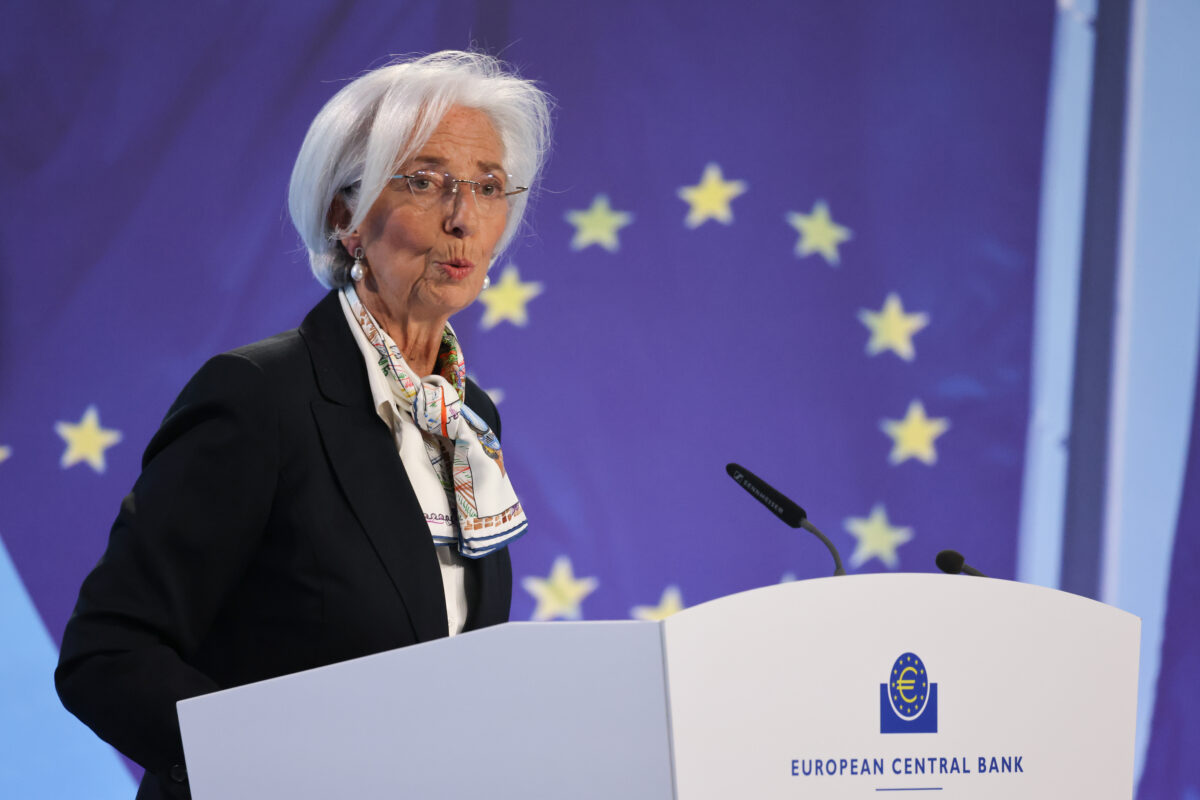FMW-Redaktion
Der Chefvolkswirt der Saxo Bank, Steen Jakobsen, sieht eine 60% Wahrscheinlichkeit für eine Rezession in den USA. Einer der Gründe dafür ist der kollabierende Kreditimpuls in China – die Zeiten des einfachen und billigen Geldes sind nicht nur in China vorbei. Nun sei es nur noch eine Frage der Zeit, so Jakobsen, bis die bisherige Wahrnehmung auf die dann eintretende Realität treffen wird („perception meets reality“) – denn der Kreditimpuls kommt mit sechs bis neun Monaten Verzögerung in der Realwirtschaft an (weil es so lange dauert, bis die geringeren Kredite, sprich geringere Investitionen und Konsum, sich dann in den Konjunkturdaten niederschlägt!).
Jakobsen ist übrigens oft in China, und was er in letzter Zeit darüber berichtet, ist denkwürdig: er spricht von klaren und sichtbaren Zeichen für eine deutliche Abkühlung der Wirtschaft im Reich der Mitte.
Folgenden Text von Steen Jakobsen finden Sie hier im Original:
Is close to 10 years of monetary policy experimentation finally coming to an end? The financial media sure seem to think so, while the Federal Reserve is striding determinedly along its hiking path and continues to signal more rather than less tightening to come.
The Bank of Japan, meanwhile, is exploring potential exits from its quantitative easing programme, and the European Central Bank is talking tapering.
At the same time, fixed income rates (and volatility) continue to go down – this is hardly the textbook correlation, so something else must be going on.
Indeed, the basic premise in economic and monetary policy since the low of 2008 has been credit expansion, i.e. increasing the amount of credit to help the economy recover. What was once help, however, has now become an addiction – so much so, in fact, that stopping the flow of credit will lead to a serious hangover.
This is what our report for 2017’s third quarter is all about: tapping the brakes!
Despite all of the hawkish talk circulating, tapping the brakes in terms of credit expansion risks incurring recession-like growth rates by the end of this year, and here’s why:
We economists know next to nothing about the actual black box called “the economy”; instead, we tend to monitor what comes out of the box – profit, productivity, inflation, and jobs, among other things.
The problem with this, however, is that we try to predict the course of the economy by using data points that actually follow those that we predict. To mitigate this, then, we try to look at what really drives an economy: the price of money as well as the amount of credit and energy.
The price of money – the interest rate – is the primary discounting factor that we use. The amount of credit is then used to calculate velocity and business activity, and energy lies in everything you have done today, so it’s a key component and (more importantly) a cost of the economy.
What’s interesting is that despite the currently bullish headlines and high equity valuations, we are at risk of a serious slowdown. When monitoring credit we talk about the “credit impulse,” or the net change in credit divided into the GDP.
The credit impulse leads the real economy by approximately nine months.
This chart illustrates two key things about credit; the left chart shows the massive build-up in credit led by China (and emerging markets) while the right-hand one shows how the net change of credit flow has moved from 3% of GDP to close to minus 1%!
Another way to illustrate this is by looking backwards. In 2016, Q1 saw the worst start to a trading year in decades. Central banks panicked, the Fed stopped hiking, the ECB went full throttle on QE, and the Bank of Japan adopted a new 10-year fixed rate – this amounted to a massive positive credit impulse as illustrated above.
Then, in Q3 and Q4, China became focused on tightening and reducing final leverage. So let’s apply the nine month rule to 2016… if we trace a path through May, June, July, September, October, November, December, January, and February, we should see the peak in “activity” following the expansion of credit impulse fall in January/February – and so it did!
No, the surges seen in PMI and inflation were not driven by the electoral victory of Donald Trump (expectation were, though) but instead by a large-scale credit expansion.
Every time that there has been a “bump in the road”, the solution has been the same: more credit. Now, however, central banks are openly challenging this and in the case of both the Fed and the People’s Bank of China they are forcefully reducing the “impulse” – this means that, without new reforms or tax breaks, the US and global economy will slow down significantly by the end of this year.
We have put the odds of this at 60% (not 100% , mind) but the real relevance of this call is the fact that a recession is the only true risk to the present Goldilocks environment of money flowing to stocks based on TINA ( “there is no alternative”, as per Societe Generale’s Albert Edwards).
Since the 1920s, the average recession has cost investors 33%, with the range being 25-55% . And recession, of course, is precisely the ultimate risk being courted by the model of credit expansion via a weak US dollar.
This, of course, is also the precise thing that policymakers are trying to avoid by attempting to suspend the business cycle.
This is a not a call for doom and gloom, but a note that if credit is the sole ingredient which has been used to tweak the economy over the last 10 years, then maybe the moment at which the three elements that go into our “black box” – the price of money, credit, and energy – start throwing up sparks is one we should pay attention to.
Right now, the price of policy money is rising (medium- and long-term yields are falling), the credit impulse is negative, and energy is flirting with low of the year (disinflationary).
Central banks are making the classic mistake of looking at trailing economic data, insisting that the slowdown seen in inflation and economic activity is “transitory”. We, however, will stick with the facts and counter that economic “gravity” will prevail – the credit impulse can be ignored, but one does so at one’s own risk… and one’s peril.
We see lower inflation and think the hike cycle is about to end, including the hawkish talk. This we see leading to excess return for fixed income and gold, and some incoming risk to equities.
We do also acknowledge that both consensus and investors think there is ample time to change, but time has a habit of fooling even its best observers, let alone those inflamed by desire…
Kommentare lesen und schreiben, hier klicken










Ja , aber die EZB wird allerspätesents QE im März 2018 bzw im Dezember 2017 beenden und ne Rezession ?!?
Nö, davon ist weit und breit nix zu sehen. Ein Absturz der Börsenmärkte ? Wieso ? Wenn der Anleihenmarkt jenseits von Gut und Böse bwertet ist, dürfte dies schwierig werden ?
Die Zeiten des einfachen und billigen Geldes sind vorbei ?
Ja , das stimmt, aber nicht vor Dezember 2017 ?
Ich hatte Recht, der Aktienmarkt pendelt hin und her, der Auslöser für Volaitilität wird die EZB sein, China interessiert keinen… ;)
Aber immer darauf hoffen, dass die Kiste den Bach heruntergeht, geniesst die Sonne , liebe Bären… :)
Und ich würde eher davon ausgehen, dass der Aktienmarkt weiter steigen muss, um überhaupt signifikant fallen zu können.
Wir sind derzeit in einer Sondersituation, die Anleihenmärkte sind solange astronmonisch bewertet, bis die EZB sagt : Es reicht.
Die EZB hat Andeutungen gemacht, eine „Marktnormalisierung“ wäre für alle Parteien gut, weg von Lehman usw, der Markt sollte frei sein, und dies ist er derzeit defintiv nicht !
Der Kreditimpuls kollabiert
allein das schon ist falsch, den Kreditimpuls , ja, den haben wir gesehen , wegen der Ami-Regierung, die gedacht haben, das wird schon. Lehman fallen lassen, kein Problem…
Dass die Notenbanken (durch QE-Programme) reagieren mussten !
Das sollte doch klar sein ? Der Anleihenmarkt muss fallen, damit Ihr, liebe Bären, überhaupt eine Chance habt, aber da schauen alle auf die EZB. So schwer ist das doch nicht ?
Einfach nur peinlich dieser Marko mit dem Lehmann Trauma